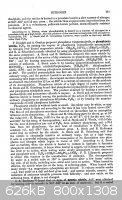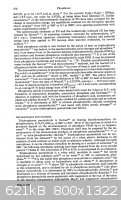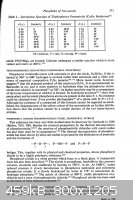symboom
International Hazard
    
Posts: 1143
Registered: 11-11-2010
Location: Wrongplanet
Member Is Offline
Mood: Doing science while it is still legal since 2010
|
|
Nitrogen Phosphide Synthisis?
24 SCl2 + 64 NH3 → 4 S4N4 + S8 + 48 NH4Cl
or
4 NH4Cl + 6 S2Cl2 → S4N4 + 16 HCl + S8
using phousphours in the reaction instead of sulfur
could nitrogen phosphide be made what are its properties
-------------------------------
ive read some where that these compounds should never be mixed
but im not sure what they form if they are
acetic acid and ethylene glycol-->??
ammonium nitrate or ammonium chloride with chlorine --> i know it makes nitrogen trichloride by what is the other products
HF and ammonia--> doesnt that make ammonium fluoride don't know why that is bad its not toxic
[Edited on 31-5-2011 by symboom]
|
|
|
The WiZard is In
International Hazard
    
Posts: 1617
Registered: 3-4-2010
Member Is Offline
Mood: No Mood
|
|
Quote: Originally posted by symboom  |
24 SCl2 + 64 NH3 → 4 S4N4 + S8 + 48 NH4Cl
or
4 NH4Cl + 6 S2Cl2 → S4N4 + 16 HCl + S8
using phousphours in the reaction instead of sulfur
could nitrogen phosphide be made what are its properties
-------------------------------
Well Phosphide of nitrogen has been know since 1858.
Mellor VIII:123 Discuses phosphorus nitride P3S5. Not noted to
be energetic. |
|
|
|
ZHANGNIUBI
Harmless

Posts: 28
Registered: 5-5-2011
Member Is Offline
Mood: No Mood
|
|
Ive heard of this compound before from a book.
this is a weak primary explosive and very sensitive.
but its structure is very interesting..
you can have a try
|
|
|
symboom
International Hazard
    
Posts: 1143
Registered: 11-11-2010
Location: Wrongplanet
Member Is Offline
Mood: Doing science while it is still legal since 2010
|
|
Pure, stoichiometric, hydrogen-free, and crystalline phosphorus nitride P3N5 has been obtained for the first time by reaction of (PNCl2)3 and NH4Cl
between 770 and 1050 K
--------
The reaction of PCl5 and NH4Cl affords substances with the empirical formula PNCl2:> then to phosphorus nitride [1] Purification by sublimation
gives mainly the trimer (PNCl2)3 and tetramer (PNCl2)4. These rings were described by Liebig in 1832[2][3] in his study of the reaction of PCl5 and
NH3:
PCl5 + NH4Cl → 1/n (NPCl2)n + 4 HCl
Typically reactions are conducted in chlorobenzene solution.
--------
in his study of the reaction of PCl5 and NH3: i think if i just react the two that should make phosphorus nitride which i had the wrong name on
my title as it should be this
also what are rthe properties of this conpound what is it reactive with reaction with water? what stable environment to preform this reaction under.
as stated in one source
|
|
|
quicksilver
International Hazard
    
Posts: 1820
Registered: 7-9-2005
Location: Inches from the keyboard....
Member Is Offline
Mood: ~-=SWINGS=-~
|
|
What was the information source of your synthesis?
|
|
|
The WiZard is In
International Hazard
    
Posts: 1617
Registered: 3-4-2010
Member Is Offline
Mood: No Mood
|
|
Mellor sez.
This from Mellor's 16-volume opus.
VIIII and VIII Supplement II
    
djh
---
Organic Chemistry: The practice of transmuting
vile substances into publications.
Anon.
|
|
|
mewrox99
Hazard to Others
  
Posts: 321
Registered: 7-6-2010
Location: New Zealand
Member Is Offline
Mood: No Mood
|
|
About your signature:
1 I think they under go exothermic esterfaction
2 NCl3 is explosive. In addition to NCl3 you get less chlorinated amines such as NH2Cl and NHCl2. It's an interesting combination but a very deadly
one to actually mix
3. Ammonium flouride is TOXIC. It's one of the most toxic flouride salts.
|
|
|
symboom
International Hazard
    
Posts: 1143
Registered: 11-11-2010
Location: Wrongplanet
Member Is Offline
Mood: Doing science while it is still legal since 2010
|
|
Quote: Originally posted by mewrox99  | About your signature:
1 I think they under go exothermic esterfaction
2 NCl3 is explosive. In addition to NCl3 you get less chlorinated amines such as NH2Cl and NHCl2. It's an interesting combination but a very deadly
one to actually mix
3. Ammonium flouride is TOXIC. It's one of the most toxic flouride salts. |
oh thats not my signature i was asking some more questions but did not want to make a whole other post just for those small questions
thanks for the answers those were puzzling me
for number three i thought i would form nitrogen trifloride NF3
|
|
|
Trifluoroacetic
Hazard to Others
  
Posts: 128
Registered: 6-8-2008
Member Is Offline
Mood: No Mood
|
|
Quote: Originally posted by symboom  | Quote: Originally posted by mewrox99  | About your signature:
1 I think they under go exothermic esterfaction
2 NCl3 is explosive. In addition to NCl3 you get less chlorinated amines such as NH2Cl and NHCl2. It's an interesting combination but a very deadly
one to actually mix
3. Ammonium flouride is TOXIC. It's one of the most toxic flouride salts. |
oh thats not my signature i was asking some more questions but did not want to make a whole other post just for those small questions
thanks for the answers those were puzzling me
for number three i thought i would form nitrogen trifloride NF3 |
HF + ammonia yeilds ammonium fluoride. Not NF3. BTW unless you are doing plasma ashing or making semiconductors NF3 wouldn't be of any use to you.
You might be surprised to find out That NF3 is a very stable nitrogen trihalide that exists as a gas. It's not explosive like the other Nitrogen
Trihalides. This has alot to do with the size of the fluorine atom as well as it's chemistry.
|
|
|
Trifluoroacetic
Hazard to Others
  
Posts: 128
Registered: 6-8-2008
Member Is Offline
Mood: No Mood
|
|
Ammonium fluoride and Ammonium Bifluoride are about as dangerous as HF. They will burn you and poison you. they also etch glass. They are used in
glass etching pastes sold at hobby shops.
|
|
|
AndersHoveland
Hazard to Other Members, due to repeated speculation and posting of untested highly dangerous procedures!
    
Posts: 1986
Registered: 2-3-2011
Member Is Offline
Mood: No Mood
|
|
A research team lead by Thomas Klapötke has produced a compound with the structure
P3N3(N3)6, a hexagonal ring containing alternating phosphorous and nitrogen atoms, with two azido groups on each phosphorous atom. The ring appears to
be aromatic.
http://www.chemie.uni-muenchen.de/ac/klapoetke/?menu=news
http://onlinelibrary.wiley.com/doi/10.1002/anie.200601670/ab...
It is called hexaazidocyclotriphosphazene, and is a sensitive liquid explosive. It explodes at 220 °C. It was probably prepared by treating
hexachlorophosphazene with sodium azide.
The hexahydrazide also exists.
P3N3(NHNH2)6
R. J. A. Otto and L. F. Audrieth. J. American Chemical Society 80, 3575 (1958)
Potentially many interesting energetic salts could be prepared from this compound...
[Edited on 4-8-2011 by AndersHoveland]
I'm not saying let's go kill all the stupid people...I'm just saying lets remove all the warning labels and let the problem sort itself out.
|
|
|
AndersHoveland
Hazard to Other Members, due to repeated speculation and posting of untested highly dangerous procedures!
    
Posts: 1986
Registered: 2-3-2011
Member Is Offline
Mood: No Mood
|
|
Apparently P3N5 is not explosive, as it decomposes at 800degC.
http://books.google.com/books?id=Mtth5g59dEIC&pg=PA737&a...
I'm not saying let's go kill all the stupid people...I'm just saying lets remove all the warning labels and let the problem sort itself out.
|
|
|
Otter
Harmless

Posts: 23
Registered: 5-8-2011
Location: Shrewsbury, Massachusetts, USA
Member Is Offline
Mood: Pensieve
|
|
http://en.wikipedia.org/wiki/Phosphide
The term you use is actually incorrect, since nitrogen is more electronegative than phosphorus...
Assuming that you mean to say a nitrogen triple-bonded to a phosphorus atom...
Knowing that nitrogen gas is incredibly unreactive and that triple bonds store a LOT of energy (the only way to make C-C triple bonds is arc furnaces
or using alkali metal amides (explosive in moist air!) to cause DOUBLE elimination reactions on vicinal alkyl dihalides), the gas would probably be
either incredibly uninterestingly unreactive like nitrogen OR so energetically unstable that it just spontaneously dissociates to nitrogen gas and
phosphorus solid.
This being said the only possible way might be to use high energy UV radiation to create atomic nitrogen and atomic phosphorus and hope something
happens, however knowing that phosphorus can form polyatomic ions of many different charges you'd be incredibly hard pressed to make any PN gas.
However what I said was just somewhat educated speculation, your best bet would be to ask a computational chemist. 
*Otter sniffs the puddle.*
*Licks a tiny bit of it up.*
*Pukes out dinner.*
|
|
|
AndersHoveland
Hazard to Other Members, due to repeated speculation and posting of untested highly dangerous procedures!
    
Posts: 1986
Registered: 2-3-2011
Member Is Offline
Mood: No Mood
|
|
Quote: Originally posted by Otter  |
because of the triple bond, the gas would probably be either incredibly uninterestingly unreactive like nitrogen OR so energetically unstable that it
just spontaneously dissociates to nitrogen gas and phosphorus solid
|
...OR, more likely, the triple bond in PΞN would have properties somewhere between those two extreme examples you mentioned.
The compound "PN" typically exists as a polymer.
I'm not saying let's go kill all the stupid people...I'm just saying lets remove all the warning labels and let the problem sort itself out.
|
|
|